Savoring the Natural: Exploring Nagano’s Local Flavors
Aug 23,2018
Savoring the Natural: Exploring Nagano’s Local Flavors
Aug 23,2018
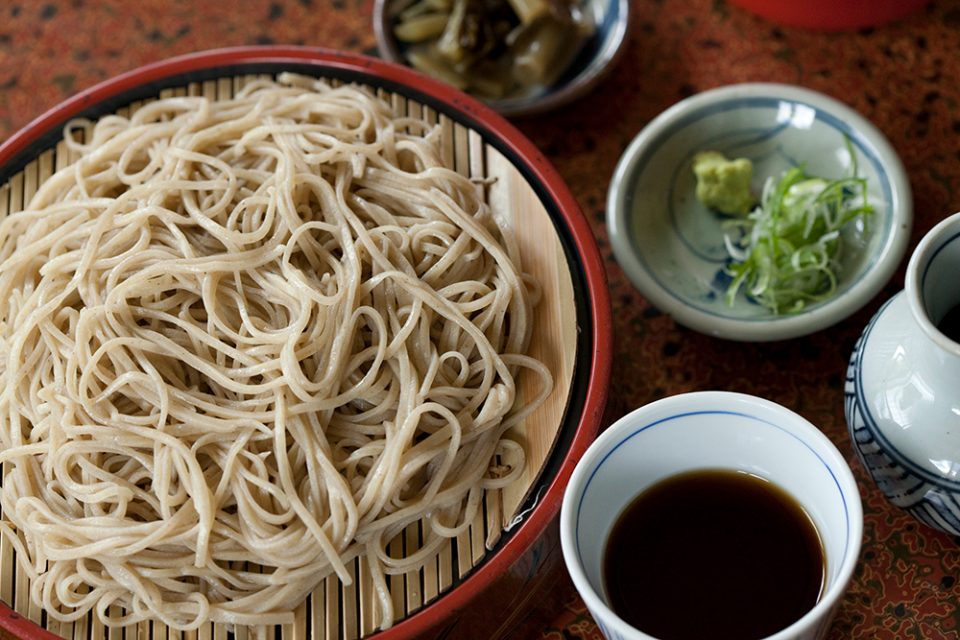

In Part I, we paid a visit to Marukome Co., Ltd.’s Miasa Highland Fermentation Warehouse in Omachi at the foot of the Northern Japanese Alps in Nagano Prefecture, where miso is made the natural way. We also mentioned that there are some wonderful eateries nearby where you can enjoy great local food. In Part II we’ll be showcasing two of these. Be sure to check them out if you ever visit Miasa Highland Fermentation Warehouse.
▶Savoring the Natural: Exploring Traditional Miso Brewing in Nagano
Yamashina, a six-minute drive from Miasa Highland Fermentation Warehouse, is a characterful restaurant housed in a remodeled guesthouse. This venerable institution, which has been in business for forty-eight years, serves handmade Shinshu soba noodles. It’s popular, though, and once they’re sold out they close, so if you’re going to be visiting in the afternoon, it’s a good idea to phone first. The place has an old-fashioned, homey interior with tatami-matted floors. Seniors and families with kids will feel welcome as well.
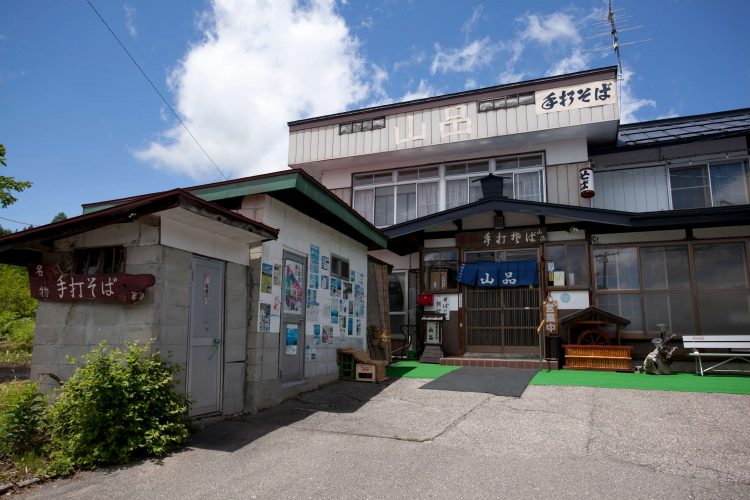
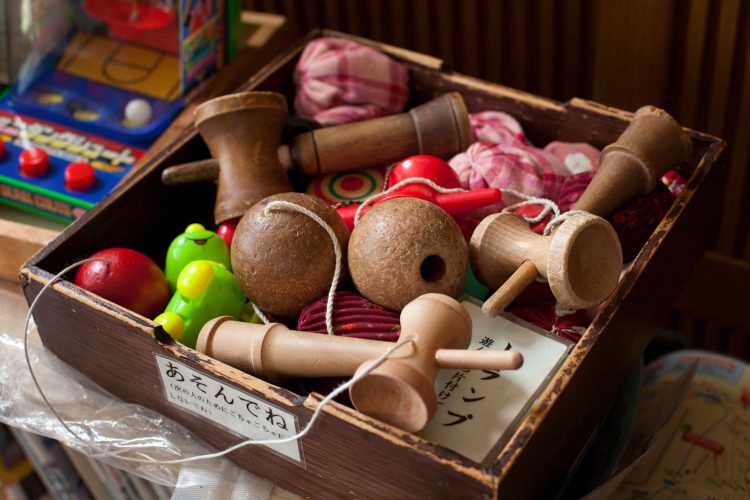
The most popular items on the menu, according to proprietress Takeori Fusako , are mori soba, or buckwheat noodles served on a bamboo tray, and what is called usuyaki, literally “thin fry.” The mori soba consists of highly fragrant noodles made by hand from stone-ground local buckwheat flour containing homegrown buckwheat groats. Fresh mountain water is used when rolling the noodles. Soba made from 100 percent buckwheat is a popular choice for those who want to enjoy the rich aroma of buckwheat to its fullest. But only limited servings are available, so you need to ask if there’s any left.
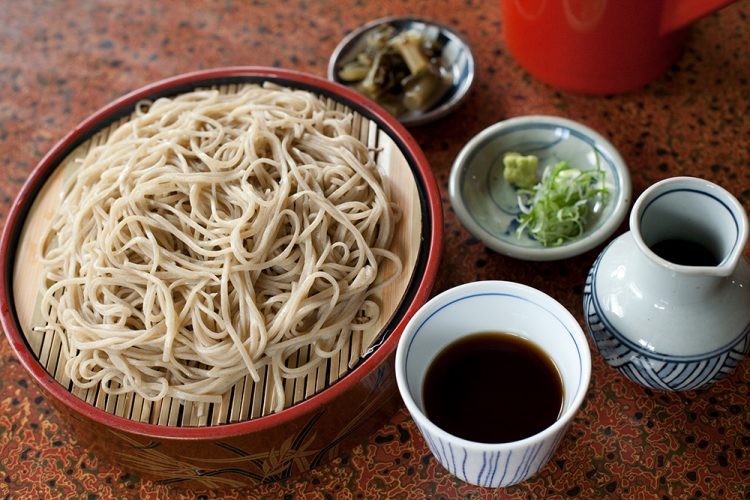
Mori soba, a mainstay of the menu
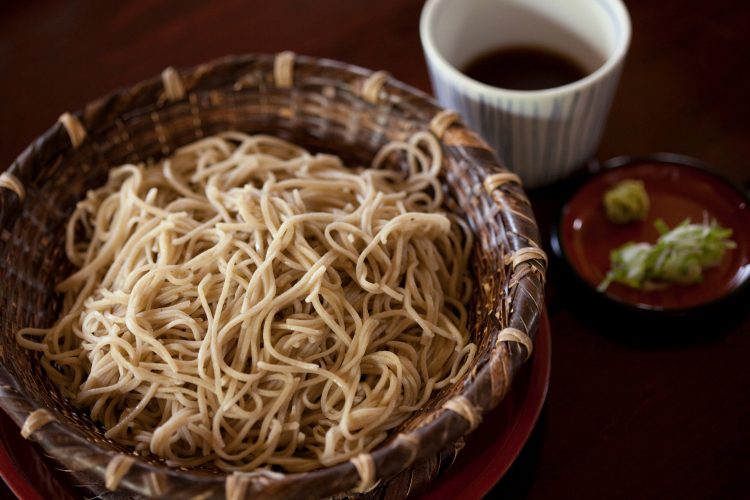
100 percent buckwheat soba
Usuyaki is a traditional dish in these parts that the locals have long eaten as a snack. It consists of a pizza-like crust made from buckwheat flour coated with a sweetish variety of miso and sprinkled with green onions. With its nice springy texture, it’s halfway between a snack and a side dish. I found it quite filling. The restaurant uses Marukome miso to make it.
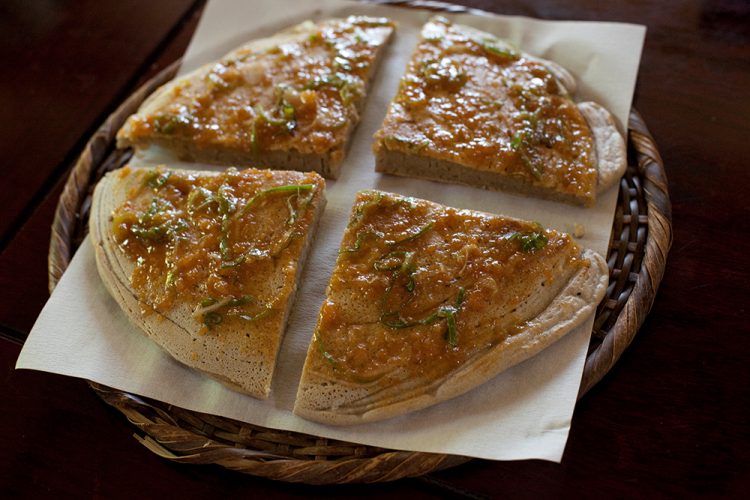
The restaurant’s renowned usuyaki. Deliciously filling, but save room for your soba!
Also on the menu are two other traditional Shinshu (Nagano) dishes, wasp larvae and locust tsukudani (simmered in sweetened soil sauce), which Emperor Showa loved to eat. If you’re unfamiliar with these delicacies, you’re probably thinking “Ugh!” But in fact they went down surprisingly smoothly. They would have gone nicely with a drink of sake.
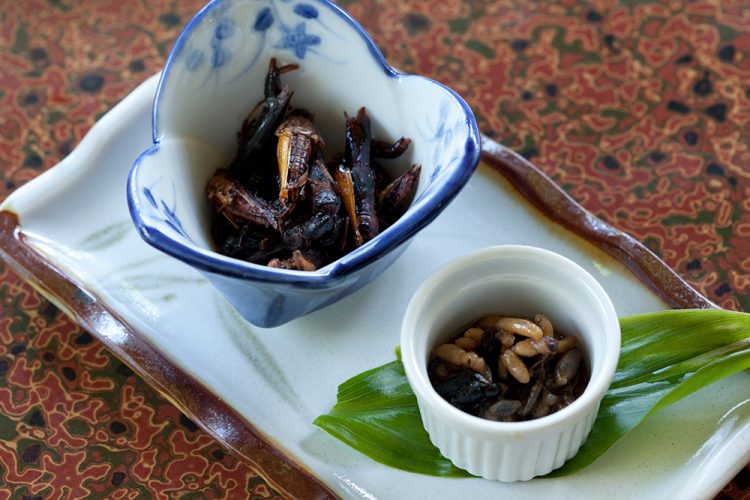
Locust tsukudani (left) and wasp larvae (right). Visually unappealing but an epicure’s delight!
“This is a cool highland area with volcanic soil, so it produces great-tasting vegetables and buckwheat,” notes the proprietress. If you’re unsure what to order, don’t hesitate to ask her for a recommendation. She’ll answer with a smile!
Takeori Fusako, proprietress, Yamashina
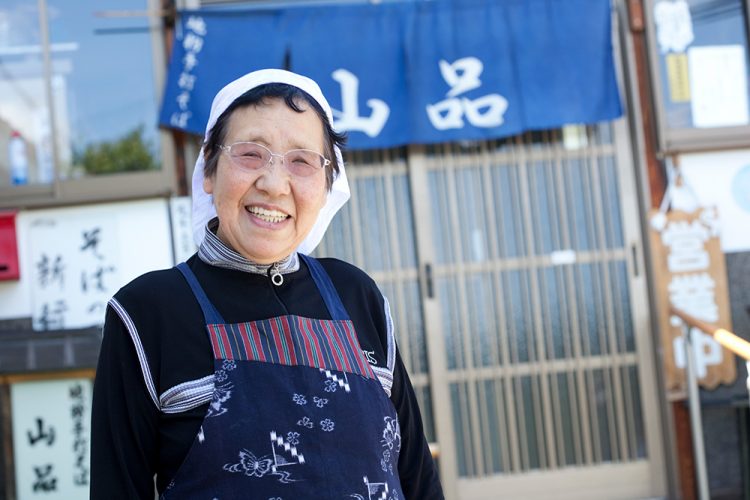
Omachi native Takeori Fusako remodeled what was originally a guesthouse and turned it into a soba noodle restaurant with her husband. Her big bright smile and friendly personality soothe the soul.
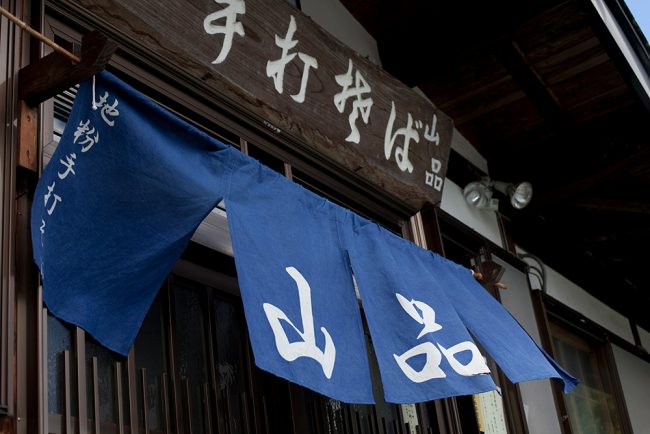

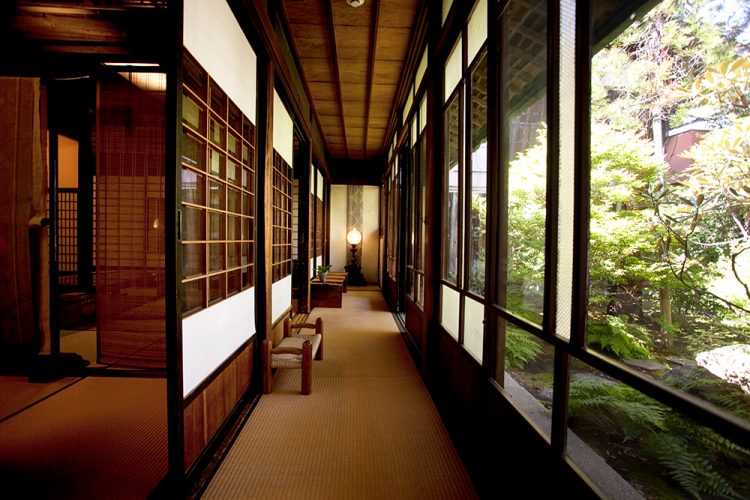
Sosha Wachigai is housed in a charming old residence built 120 years ago. Until recently it was the home of the Kuribayashi family, who have lived in Omachi since the Muromachi period (1336-1573). The moment you step inside, you leave your everyday world behind and are transported back a century or more in time. The house features both Japanese- and European-style rooms, and everywhere you turn are antique furnishings and ornaments—precious items that once lay gathering dust in the Kuribayashi family warehouse. You’re immediately struck by how tastefully they’re arranged. They were laid out by the owner herself, Watanabe Mitsuko, an art school graduate and former professional crafts maker.
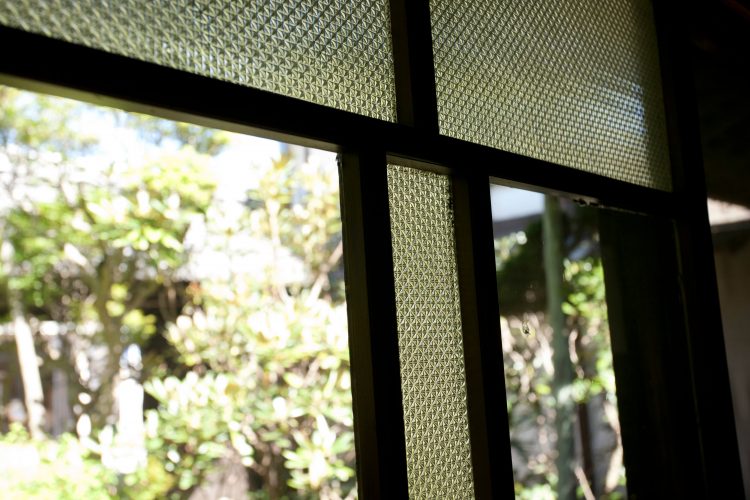
Glass door looking out on the garden. The precious glass is irreplaceable if broken.
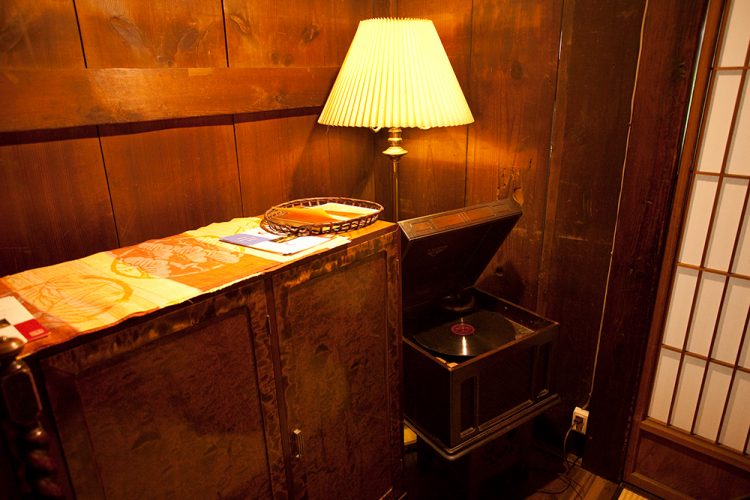
The rooms are beautifully appointed with classic antique furnishings. Look at that chic old record player!
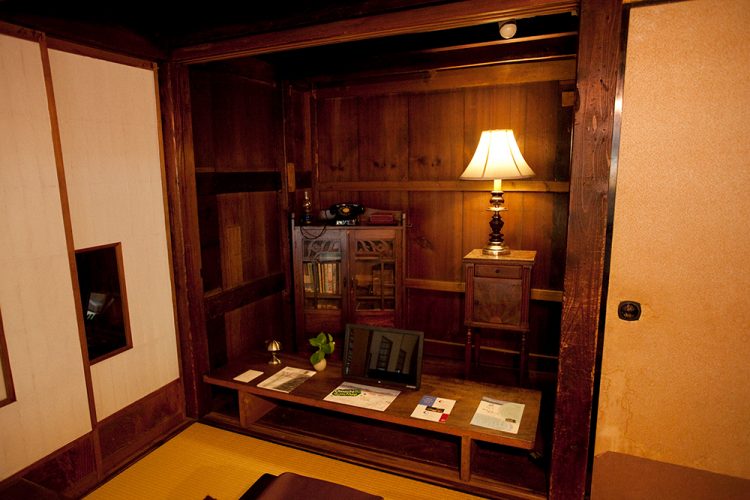
Alcove with old-fashioned phone and European lamp. The ambience is truly captivating.
The food served here consists exclusively of Omachi cuisine made with local ingredients. The menu is distinguished by the abundance of healthy items, which contain generous amounts of organic vegetables grown by Mitsuko’s husband. Be sure to try the side dishes, which vary from season to season; the soft oboro tofu, which is packed with flavor; and the Wachigai Zaza, the restaurant’s own original thin noodles made with local flour and served fresh. In the Shinshu region, zaza is the blanket term for udon, soba, and other types of noodles.
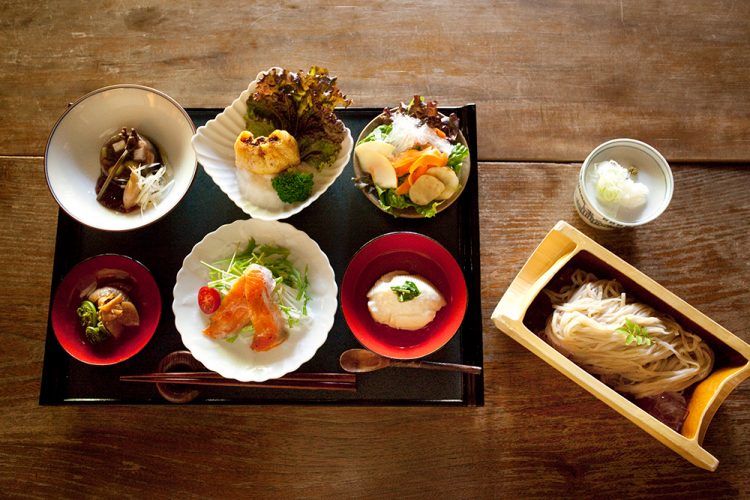
This is the Mokichi Zen. Clockwise from upper left: jellied ego with sweet miso (ego is a traditional Shinshu ingredient made from a type of seaweed called egogusa or egonori); nanahomare lucky bag of delights (nanahomare is a type of soybean being grown experimentally in Omachi); agar and Jerusalem artichoke salad with persimmon sauce; Wachigai zaza; oboro tofu with koshiabura; Shinshu salmon in rapeseed oil; freeze-dried daikon and steak.
Note: Items subject to change depending on the season.
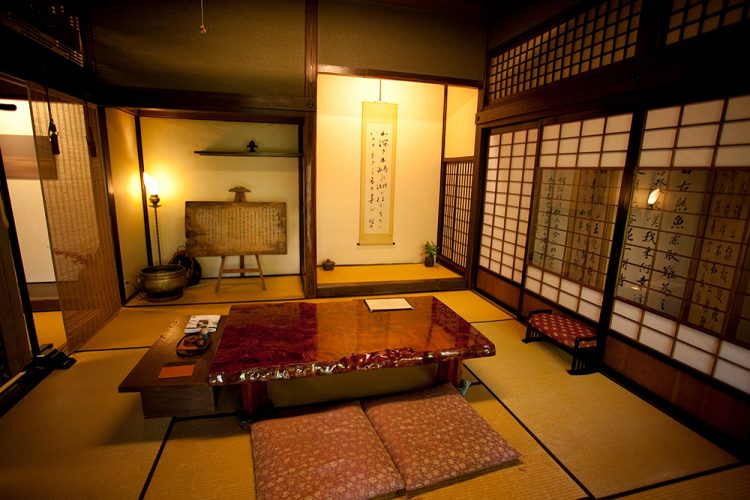
The numerous rooms in which meals are served each have their own distinctive ambience. You can’t help looking around.
There’s a gallery area in the large tatami-matted room on the second floor. Here works by various artists, including objets d’art, interior ornaments, and clothing and accessories, are displayed and sold, for Mitsuko is committed to supporting local artists.
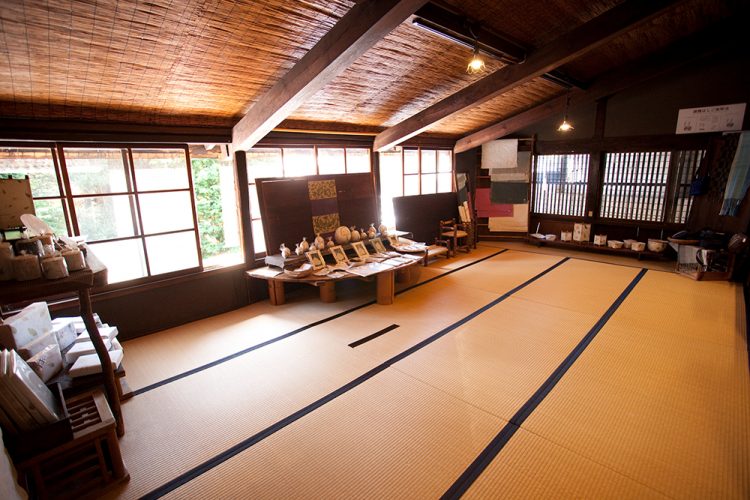
The gallery area on the second floor. Here works by several artists are displayed and sold.
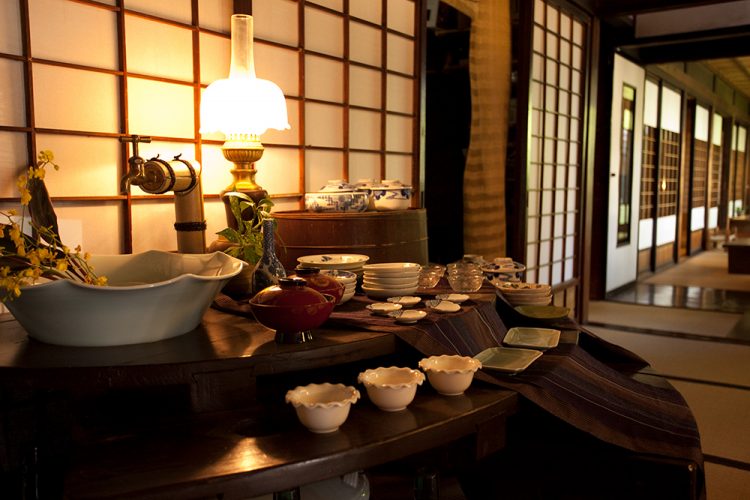
The first floor also features works by different artists, all adorable enough to tempt a woman’s heart—and loosen her purse strings.
Moreover, the place displays old documents handwritten in Japanese calligraphy, as well as works by poet Saito Mokichi. You history and literature buffs out there won’t want to miss them! So relax and enjoy a slower pace of life as you savor the great food. And take in artworks that can only be seen here.
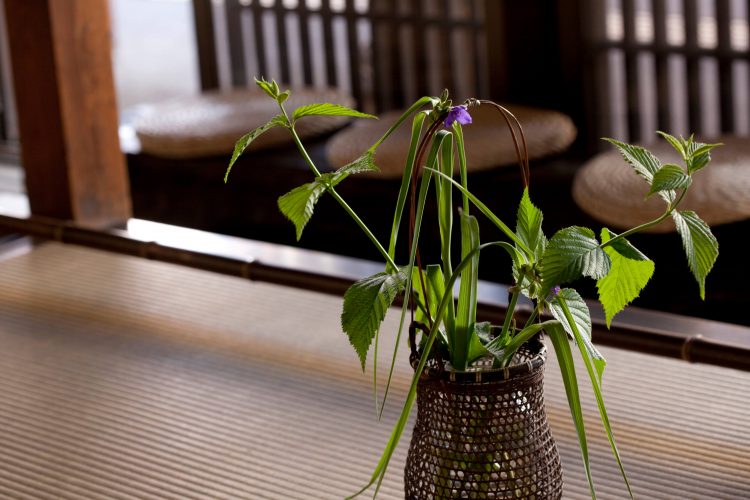
Next to Wachigai are two springs called Otoko mizu (male water) and Onna mizu (female water). By drinking from both, it’s said, the unmarried can find true love and the married conjugal bliss. Wachigai even gives you a pair of bottles to fill with the water. It’s such thoughtful gestures that set Wachigai apart. When you visit, don’t forget to draw water from both springs!
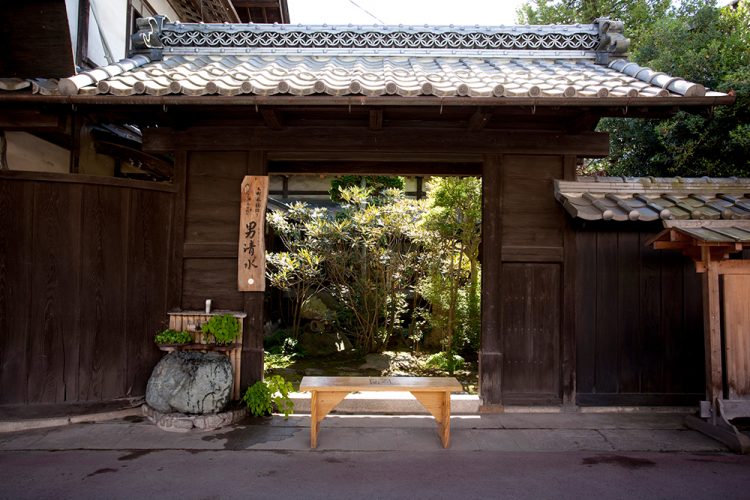
The area for drawing Otoko mizu (male water). What a magnificent gate!
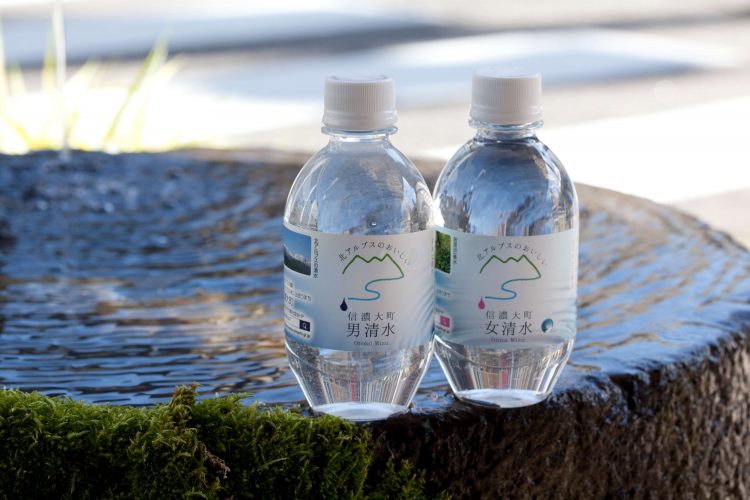
The male and female water taste completely different, so be sure to compare them. Wachigai patrons are eligible to receive a pair of bottles like these.
Watanabe Mitsuko, Owner, Sosha Wachigai
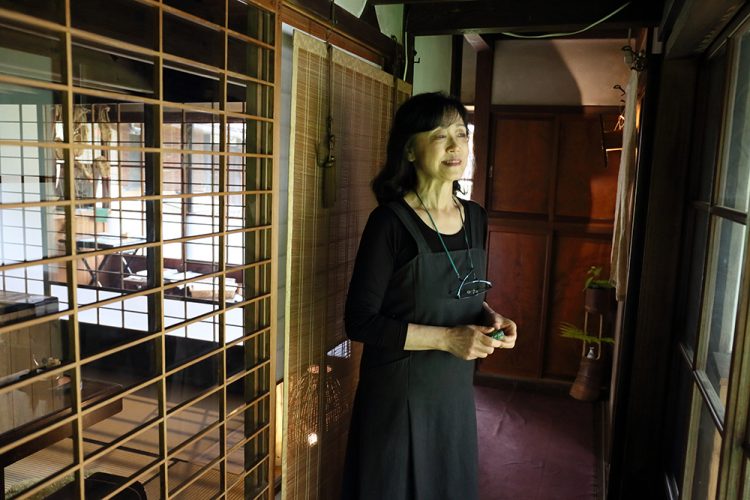
Born in Omachi in 1956, Watanabe Mitsuko is a graduate of Joshibi University of Art and Design Junior College and has exhibited at the Japan Contemporary Arts and Crafts Exhibition. Until her mid-thirties she worked as a professional crafts maker, including producing the costumes for the mounted archery event at the Nyakuichi-Oji Shrine festival. An eye operation, however, forced her to abandon her artistic career. In 1997, she served as chief secretary of the Iizura Omachi Tokusankan Cooperative Association. She established Sosha Co., Ltd. in 2000 and has been its CEO ever since.
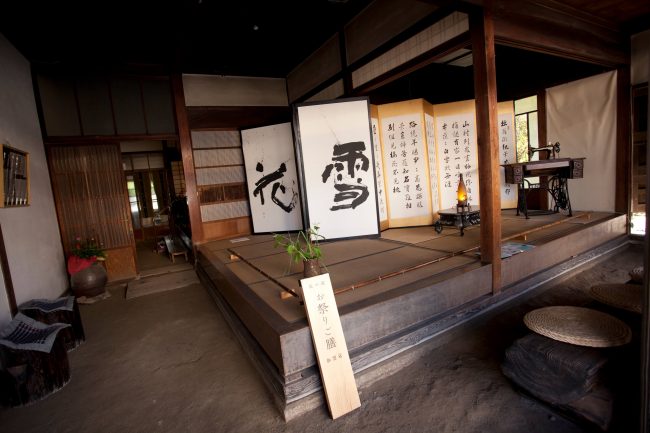
Yamashina and Sosha Wachigai are both delightful restaurants where you can savor the finest local cuisine in relaxing surroundings. Be sure to check them out when visiting the many natural attractions that Omachi has to offer!
▶Savoring the Natural: Exploring Traditional Miso Brewing in Nagano